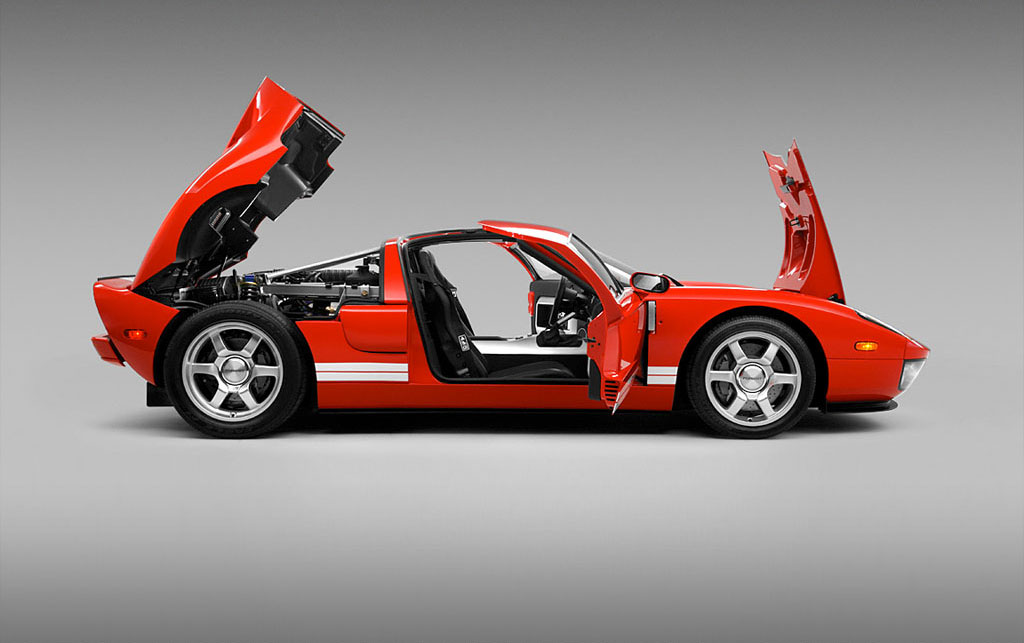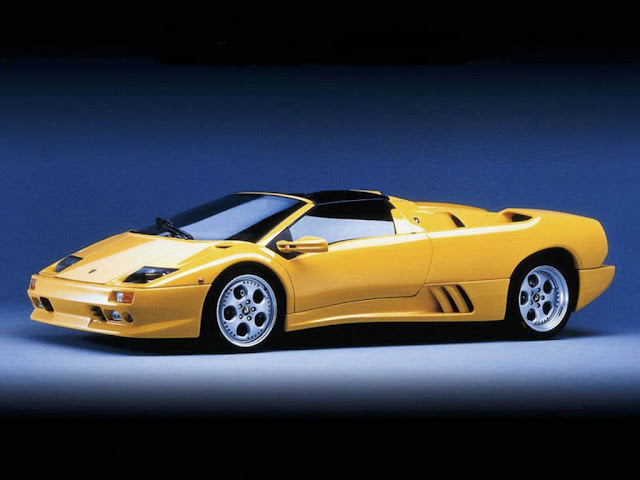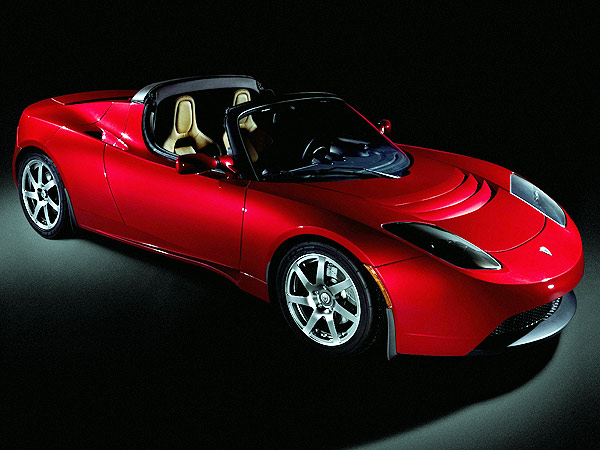In his 2006 documentary, Who Killed the Electric Car , filmmaker Chris Paine examined the birth and premature death of battery electric cars in the mid-1990s.
Now Paine is back with the commercial release of Revenge of the Electric Car , an insider’s view of an historic shift in the automotive industry, filmed behind closed doors between 2007 and 2010.
The movie profiles four executives who take their companies in new directions during a time of economic recession and government bailout of the auto industry. Paine gains their trust, promising not to release the film until 2011. “We tracked some really amazing characters quite happy to throw it all on the line.”
When GM's electric vehicle program was killed in the 1990s, the vehicles were crushed in the Nevada desert.
Paine follows General Motors Vice Chairman Bob Lutz as he pushes his ailing firm to build an electric car, a program the company had killed in the 1990s.
“This guy is Mr. Detroit. I think he had some kind of epiphany," says Paine. "He says, ‘I want my last project to be maybe for a higher good. And I also want it to be a damned good car.’”
In the film, Lutz explains why he gives a green light to GM’s electric car, the Chevy Volt . “We were discussing how Toyota was running away with the technological image and the environmental image and so forth and I said, 'Why don’t we at least do an electric prototype?'”
GM brought the Volt to market in December 2010. A month later the Volt was honored as ‘Car of the Year’ at the North American International Auto Show in Detroit.
The Tesla roadster is also on the Detroit showroom floor. Dot.com billionaire and start-up entrepreneur Elon Musk gambles his fortune on the electric sports car.
WestMidWest Productions
Telsa Motors roadster, the first electric sports car, was saved from bankruptcy by a government loan.
He says the company plans to put thousands like it on the road. “Beyond that, really what matters is, are we making a difference in the world? And for us to make a difference in the world, we have to build a lot of cars. And, until we see every car on the road being an electric, we will not stop. This is just the beginning of the beginning.”
Paine weaves another risk taker, Renault-Nissan CEO, Carlos Ghosn into the story. “This guy is such a die-hard capitalist. He is not going to do anything if there isn’t a mathematical equation at the end of it that’s going to be good for his company. He decided to put $6 billion in the electric car.”
The car is the Nissan Leaf , an all-electric mass market vehicle with a 160-kilometer range. Ghosn predicts a huge return. “It’s going to change the face of the company. It’s going to change the face of the brand and it’s going to change, probably, even the image of our industry.”
Besides getting to know such industry titans, Paine introduces his next door neighbor, Greg “Gadget” Abbot . “For as long as I’ve known him, he’s been converting electric cars. And there are a lot of people doing this, not just Gadget, but lots of people like him. So I thought let’s include someone who is not waiting around for major car companies to do this.”
WestMidWest Productions
Filmmaker Chris Paine's crew films the General Motors Chevy Volt production line.
Revenge of the Electric Car isn’t just a movie about auto-industry CEOs and engineers. It’s also about the electric cars themselves, and the budding consumer interest in them.
Ray Wirt, editor-in-chief of the automotive blog, Jalopnik , appears in the film. At a festival screening, Wirt told the audience that car enthusiasts can also love electric cars.
“I think that so often we talk about fun cars and we think Mustang. We think Corvette. We think Porsche. How much cooler would it be if you didn’t have to worry about filling it up with gas? That would be a real cool car.”
After viewing Revenge of the Electric Car, Dave Simison from Annapolis, Maryland says electric cars make sense. The 25,000 dollar price tag doesn’t bother him. “Well, that’s kind of in the range because you are going to save money on gas.”
His wife, Betsy Heney agrees. “I’ll tell you what it will take. My husband just has to get in the car and he will buy it. I guarantee you.”
Filmmaker Paine’s Revenge of the Electric Car suggests that early adopters like these are helping to write the next chapter in automotive history - a post-gasoline era that could be good news for business, consumers, and the environment.
Now Paine is back with the commercial release of Revenge of the Electric Car , an insider’s view of an historic shift in the automotive industry, filmed behind closed doors between 2007 and 2010.
The movie profiles four executives who take their companies in new directions during a time of economic recession and government bailout of the auto industry. Paine gains their trust, promising not to release the film until 2011. “We tracked some really amazing characters quite happy to throw it all on the line.”
When GM's electric vehicle program was killed in the 1990s, the vehicles were crushed in the Nevada desert.
Paine follows General Motors Vice Chairman Bob Lutz as he pushes his ailing firm to build an electric car, a program the company had killed in the 1990s.
“This guy is Mr. Detroit. I think he had some kind of epiphany," says Paine. "He says, ‘I want my last project to be maybe for a higher good. And I also want it to be a damned good car.’”
In the film, Lutz explains why he gives a green light to GM’s electric car, the Chevy Volt . “We were discussing how Toyota was running away with the technological image and the environmental image and so forth and I said, 'Why don’t we at least do an electric prototype?'”
GM brought the Volt to market in December 2010. A month later the Volt was honored as ‘Car of the Year’ at the North American International Auto Show in Detroit.
The Tesla roadster is also on the Detroit showroom floor. Dot.com billionaire and start-up entrepreneur Elon Musk gambles his fortune on the electric sports car.
WestMidWest Productions
Telsa Motors roadster, the first electric sports car, was saved from bankruptcy by a government loan.
He says the company plans to put thousands like it on the road. “Beyond that, really what matters is, are we making a difference in the world? And for us to make a difference in the world, we have to build a lot of cars. And, until we see every car on the road being an electric, we will not stop. This is just the beginning of the beginning.”
Paine weaves another risk taker, Renault-Nissan CEO, Carlos Ghosn into the story. “This guy is such a die-hard capitalist. He is not going to do anything if there isn’t a mathematical equation at the end of it that’s going to be good for his company. He decided to put $6 billion in the electric car.”
The car is the Nissan Leaf , an all-electric mass market vehicle with a 160-kilometer range. Ghosn predicts a huge return. “It’s going to change the face of the company. It’s going to change the face of the brand and it’s going to change, probably, even the image of our industry.”
Besides getting to know such industry titans, Paine introduces his next door neighbor, Greg “Gadget” Abbot . “For as long as I’ve known him, he’s been converting electric cars. And there are a lot of people doing this, not just Gadget, but lots of people like him. So I thought let’s include someone who is not waiting around for major car companies to do this.”
WestMidWest Productions
Filmmaker Chris Paine's crew films the General Motors Chevy Volt production line.
Revenge of the Electric Car isn’t just a movie about auto-industry CEOs and engineers. It’s also about the electric cars themselves, and the budding consumer interest in them.
Ray Wirt, editor-in-chief of the automotive blog, Jalopnik , appears in the film. At a festival screening, Wirt told the audience that car enthusiasts can also love electric cars.
“I think that so often we talk about fun cars and we think Mustang. We think Corvette. We think Porsche. How much cooler would it be if you didn’t have to worry about filling it up with gas? That would be a real cool car.”
After viewing Revenge of the Electric Car, Dave Simison from Annapolis, Maryland says electric cars make sense. The 25,000 dollar price tag doesn’t bother him. “Well, that’s kind of in the range because you are going to save money on gas.”
His wife, Betsy Heney agrees. “I’ll tell you what it will take. My husband just has to get in the car and he will buy it. I guarantee you.”
Filmmaker Paine’s Revenge of the Electric Car suggests that early adopters like these are helping to write the next chapter in automotive history - a post-gasoline era that could be good news for business, consumers, and the environment.















+(1995)+(B$+48,000)+(A).JPG)


























